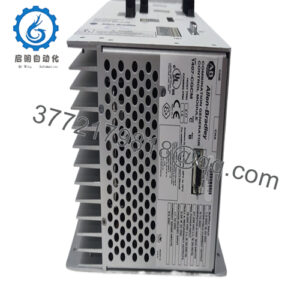Description
Product Model: 140DDO35300
- Product Brand: Schneider Electric
- Product Series: Modicon Quantum
- Product Features:
• 32 discrete solid-state outputs (source logic) at 24 V DC
• Organized into 4 groups of 8 channels, with internal group fuse protection
• Fast response times (≤ 1 ms switching) and internal output protection fuses
• High isolation: 1,780 Vrms between channels & bus, 500 Vrms between groups
Technical Specifications Table
| Specification | Value / Range |
|---|---|
| Output type | Solid-state (source logic) discrete output |
| Number of outputs | 32 channels |
| Channel grouping | 4 groups × 8 channels each |
| Nominal output voltage | 24 V DC |
| Output voltage limits | 19.2 to 30 V DC |
| Absolute maximum (pulse) | 56 V for 1.3 s decaying pulse |
| Voltage drop | ~0.4 V at 0.5 A |
| Maximum load current | 16 A per module (4 A per group) |
| Surge current | ≤ 5 A for 0.0005 s |
| Response time | ≤ 1 ms (off → on) and ≤ 1 ms (on → off) |
| Leakage current | 0.4 mA (at 30 V) |
| Isolation (channel to bus) | 1,780 Vrms DC, 1 minute |
| Isolation (group to group) | 500 Vrms DC, 1 minute |
| Protection | Internal fuses (5 A per group) |
| Power dissipation | 1.75 W + (0.4 V × module load current) |
| Bus current draw | 330 mA |
| LEDs / signaling | 32 green channel LEDs, 1 red fault LED, 1 green bus Active LED |
| Operating temperature | 0 to 60 °C |
| Storage temperature | –40 to +85 °C |
| Relative humidity | Up to 95 % (non-condensing) |
| Altitude | ≤ 5,000 m |
| Certifications | UL 508, CSA C22.2 No. 142, various maritime / marine / safety standards |
| Weight | ~0.45 kg (0.99 lb) |
| Discontinuation | Discontinued on Sep 15, 2023 |
| End-of-service | Dec 31, 2024 |
| Replacement | BMXDDO3202K (Modicon X80 discrete output module) |
Technical Features & Benefits
The 140DDO35300 is a solid-state DC discrete output module in the Modicon Quantum I/O line. It offers 32 output channels, organized in four groups of eight, and operates on 24 V DC source logic (positive logic).
One of its strengths is the internal grouping and protection. Each group of eight channels is backed by a 5 A fuse, allowing localized protection without affecting the entire module. Surge handling is also included, with allowance for up to 5 A pulses for as short as 0.5 ms.
In typical use, each group can drive up to 4 A, giving a module total capacity of 16 A. The module’s response times are fast: switching between states is under 1 ms in both directions. Leakage current is minimal (~0.4 mA at 30 V) ensuring outputs don’t drift or bleed under light loads.
Electrical isolation is robust. The channel-to-bus isolation is rated at 1,780 Vrms (for one minute), and group-to-group isolation at 500 Vrms. This helps prevent ground loops or interference across the module’s channels.
For diagnostics, 32 green LEDs indicate individual output status, a red LED signals an external fault (such as blown fuse or loss of field power), and a green “Active” bus LED shows that the module is communicating.
Because the 140DDO35300 is built following industrial quality standards, it achieves certifications such as UL, CSA, and other regional safety and conformity marks, and is designed to survive harsh environments (EMI, ESD, temperature, altitude).
Powering this module draws 330 mA from the backplane, so you must account for that when budgeting your I/O bus capacity.
One caveat: Schneider has discontinued this module (as of September 15, 2023), with end-of-service set for December 31, 2024. The recommended successor is BMXDDO3202K from the Modicon X80 line (32-point discrete output module).
- 140DDO35300
Product Role & System Fit
In a Quantum automation rack, the 140DDO35300 sits in a discrete output slot, controlling field devices such as relays, solenoids, valves, actuators, indicator lights, or small motors. Because it is a source-type output module, the module sources current to the load (i.e. the module supplies positive voltage to the load, which will sink to ground).
By organizing outputs into groups, the module simplifies wiring and protection strategies. For example, each group might serve a particular machine zone or function, allowing easier diagnostics and modular replacement.
Because it uses positive / source logic, it fits into systems where output wiring expects sourcing behavior (rather than sinking). The 24 V DC range is consistent with many industrial control standards.
When replacing or upgrading, care must be taken to match output logic (source vs sink), voltage ratings, and current capability. Since Schneider recommends the BMXDDO3202K as replacement, integrators planning migration should verify that the logic polarity and module behavior match their existing system.
Because 140DDO35300 is discontinued, many systems maintain them as legacy modules. In new designs, it’s often better to adopt the newer X80 or other modern I/O lines, but the 140DDO35300 continues to be relevant for upgrades where full replacement is not feasible.
Applications & Industry Context
In manufacturing plants, discrete output modules like 140DDO35300 are essential for toggling actuators—think opening solenoid valves, turning on pumps, driving contactors, enabling motors, or energizing warning lights. Because outputs must respond quickly and reliably, the fast switching (<1 ms) makes this module suitable for interlock logic, sequencing, and safety fallback behavior.
In process industries (water treatment, chemical plants, oil & gas), many field devices are actuated by DC voltage. The 140DDO35300 often serves in control cabinets where multiple zones or machines share the same I/O rack. Its group-based approach allows modular replacement and easier circuit partitioning for safety and service.
In retrofit or brownfield upgrades, engineers often retain existing wiring and field devices while upgrading the central controller or replacing I/O incrementally. In such cases, the 140DDO35300 provides a drop-in discrete output module for Quantum racks that can coexist with new modules, so long as power, polarity, and addressing are matched.
Because industrial environments introduce noise, voltage spikes, or transients, the module’s internal surge tolerance and isolation capacity help protect sensitive output electronics and the controller hardware upstream.
One anecdote: in a food-processing facility, the facility had an aging Quantum control system. The integrator replaced analog I/O modules first, leaving discrete outputs intact. Over a weekend, they replaced a failing 140DDO35300 module with a refurbished one, restored wiring, and within hours resumed production. The field LEDs helped quickly pinpoint wire mapping and fault status.
Installation & Maintenance Insights
When installing 140DDO35300, keep the following best practices in mind:
- Slot placement: Place near related field zone modules to reduce wiring runs and voltage drops.
- Wiring topology: Use proper gauge wire per output current; ensure group wiring paths minimize inductance and avoid long loop paths.
- Group fusing: Use appropriate fuses upstream of each group. The module already includes internal 5 A fuses per group. But you may add external fusing or protection if needed.
- Output polarity check: Since the module is sourcing, ensure loads are wired to ground properly; miswiring can lead to shorts.
- LED observation: After power-up, check that each green LED reflects correct output state. If red fault LED is lit, check fuses or field wiring.
- Heat / environment: Maintain ambient conditions (0–60 °C) and prevent dust ingress. High temperature accelerates wear on internal components.
- Isolation checks: Periodically verify that isolation between channels and the bus remains intact, especially in systems exposed to high voltage spikes.
- Spare management: Since the module is discontinued, maintain at least one good spare and keep its wiring and firmware reference.
- Migration planning: When preparing to retire systems, begin integrating the replacement module (BMXDDO3202K) in a side-by-side test environment to validate performance and logic consistency.
- Order of power-up: Ensure the output module’s supply rail is energized before energizing high current loads to avoid inrush surges impacting neighboring modules.
One practical tip: before installing in a live rack, bench-test the module with dummy loads on each group, switching them on and off and observing LED response, voltage drops, and heating. Catching errors early prevents field rework.

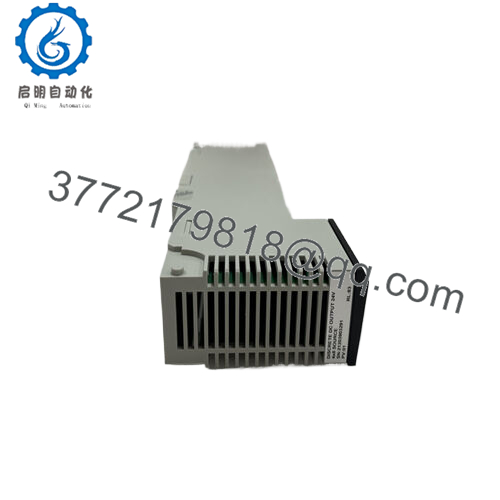
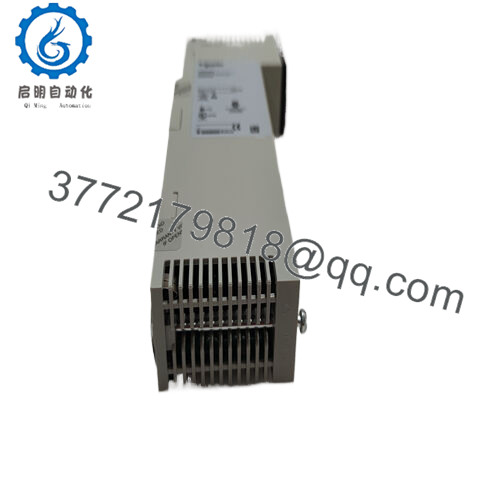
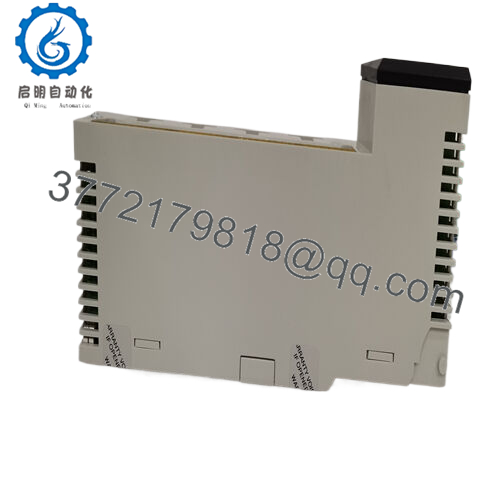
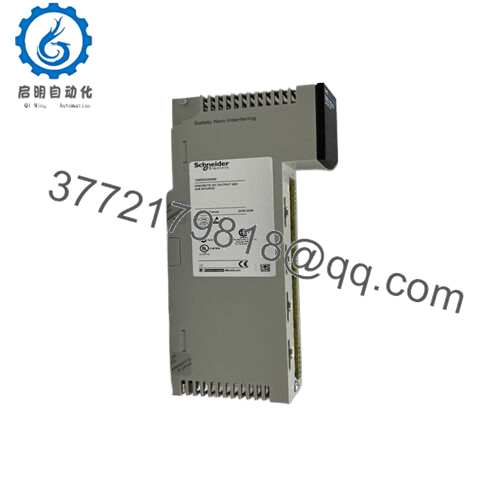
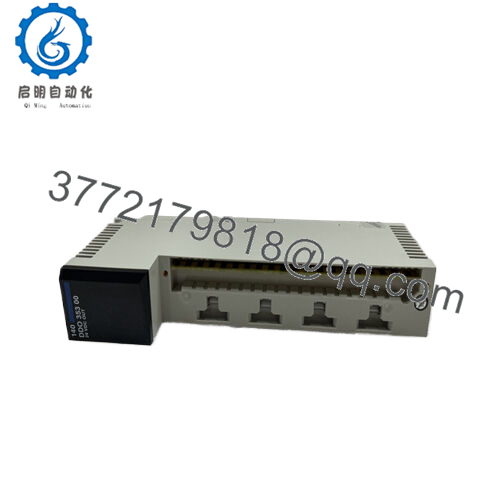
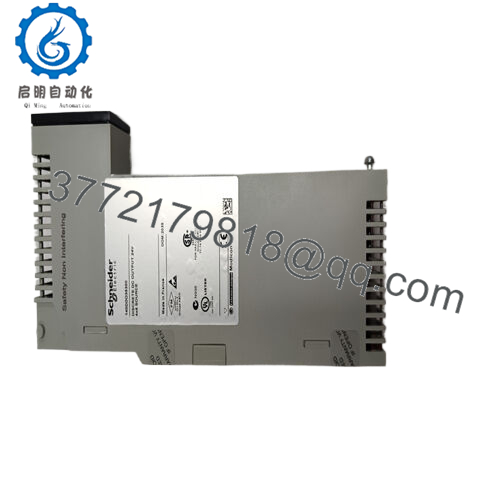
 WhatsApp: +86 16626708626
WhatsApp: +86 16626708626 Email:
Email:  Phone: +86 16626708626
Phone: +86 16626708626
